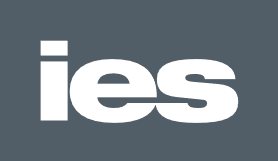Planning a complex capital equipment relocation and looking for the right partner to support the project?
.jpg?width=810&height=581&name=Equipment%20Moves%20-%20Vista%20Engineering%20Cleanroom%20(5).jpg)
Selecting the right partner requires significant research into their expertise, past projects and additional support services. As well as whether they’re equipped to handle any special requirements you might have—for example, operating in cleanroom manufacturing environments.
From experience, process, logistics and timelines to safety, insurance and post-move support, here are seven things you should ask your chosen relocation partner about before starting your project, as well as a few example questions to get started.
1. Their Expertise and Experience
Experience matters when it comes to moving complex capital equipment.
You’ll want to not only ascertain whether your selected partner has experience working with your specific type of tool, manufacturer and working environment, but also whether they have the expertise to handle any complexities and challenges that might arise during the project.
As such, you’ll want to ask about past projects they’ve been involved in, any training and special skills their teams possess and their experience working in specialist environments such as cleanrooms, if applicable.
Example questions:
- What’s your experience with equipment relocations in my industry?
- Which equipment and manufacturers do you have experience working with? Do you have experience with my specific piece of equipment?
- Can you provide references or case studies of past equipment relocations you've completed?
- How did you deal with any specific challenges or complexities that emerged during past projects?
- Can you provide details about any certifications or training that your team members have related to equipment relocation?
- Are you familiar with cleanroom protocols and cleanroom-compatible relocation practices? (If applicable to your project)
2. Process and Planning
A successful relocation hinges on strong teamwork between your internal teams and your partner.
Understanding your potential partner’s planning, coordination and execution processes will help you not only anticipate what you should expect from them throughout the project, but also whether the way they work aligns with the way your teams work and how you can collaborate more effectively.
You’ll also want to understand how your potential partner approaches planning the project, for example, how they approach facility inspections and planning to minimise downtime. This is so you can feel confident that your partner will take all your requirements into account.
Example questions:
- What is your typical process for planning and executing a capital equipment relocation project?
- How do you coordinate with our team and other stakeholders to ensure a smooth process?
- What are the roles and responsibilities of your team members and our team members throughout the process, and how do you ensure effective teamwork?
- How do you handle facility inspections and risk analyses during the planning process and ensure that all requirements are met?
- How do you assess the compatibility of the new facility with the equipment being moved?
- What measures do you take during the planning process to ensure minimal downtime during relocation?
3. Logistics and Equipment Handling
Large, delicate and complex capital equipment can be easily damaged during transit if packed inadequately or handled incorrectly.
As such, it requires special handling and packing to protect it against vibrations, shock and other environmental impacts.
Seek to understand not only how your potential partner disassembles and packs equipment to protect it against damage, but also how it ensures safe handling during transit.
As part of this, you’ll want to ask about the equipment, resources and vehicles they use, how they handle traceability and whether they have experience packing and handling hazardous or sensitive components if applicable.
Example questions:
- How do you handle the disassembly, packaging and transportation of my specific equipment?
- What precautions do you take to ensure equipment is not damaged during the move?
- Are you equipped to handle hazardous materials or sensitive components? (If applicable to your project)
- Do you have the necessary equipment and resources for the move?
- How do you ensure that you properly label, tag and document equipment for traceability during the relocation?
- What type of transportation vehicles do you use for equipment relocations, and are they equipped for secure and safe transport?
4. Timelines
Timelines are a useful tool for estimating your project’s overall length and key milestones. But they aren’t set in stone.
Knowing as much as possible upfront about the estimated project timeline and how it could potentially change over the course of the project allows you to plan accordingly on your end and manage your expectations regarding downtime.
As part of that, you’ll want to understand how long each stage of the project is likely to take (including disassembly, packing, shipping, unpacking and move-in), so you can estimate the level of disruption this might cause to your operation and how you can mitigate it.
You’ll also want to hear from your supplier about how they handle challenges and unforeseen delays that arise throughout and keep the project on track.
Example questions:
- What is the estimated timeline for the entire relocation process, from disassembly to equipment installation and testing?
- How do you manage and coordinate the various stages of the relocation to ensure that they align with our production schedule and operational requirements?
- How do you manage unforeseen delays or issues that might arise during the move?
- How do you ensure that you obtain all necessary permits, inspections and regulatory approvals within the timeline to avoid project delays?
- How do you communicate and address any deviations from the planned timeline to ensure timely problem resolution?
- Do you provide a detailed schedule that outlines specific tasks and responsibilities for both your team and ours throughout the relocation process?
5. Safety and Compliance
A great partner can not only successfully relocate equipment from point A to point B. They also have the know-how to protect your equipment and personnel during the process, while adhering to the most stringent regulatory compliance requirements.
Ensure that your potential partner has the proper safety protocols in place, the relevant certifications and training and the right protocols and practices to protect your equipment and people against harm, and your business against fines for non-compliance.
Example questions:
- What safety protocols and measures do you have in place to protect both the equipment and the personnel involved?
- Can you provide documentation or proof of safety training and certifications for the team members involved?
- How do you handle hazardous materials associated with semiconductor or cleanroom equipment, and ensure their safe transport and disposal? (If required)
- How do you ensure compliance with local regulations and industry standards throughout the project?
- What kind of documentation and traceability practices do you employ during the relocation to maintain accuracy and compliance?
6. Insurance and Liability
It doesn’t happen often, but it does happen: relocations can go wrong.
And, when they do, you want peace of mind that you’re fully covered for the costs of repairing damages to equipment, replacing lost equipment or any accidents.
Ask your potential partner for details about their existing insurance coverage and what’s covered, so you can feel confident that you’re financially protected throughout the move. You’ll also want to understand which areas you would be liable to carry out additional insurance for.
Example questions:
- What type of insurance coverage do you have for equipment damage, loss and accidents during the project?
- Can you provide copies of your insurance policies, including coverage limits and policy numbers, for our review?
- How do you handle liability in case of any unforeseen incidents?
- Do you require our company to carry any specific insurance coverage or provide additional coverage for the project?
- Are there any exclusions or limitations in your insurance policies that we should be aware of?
7. Post-Move Support
Your project doesn’t just end when your tool reaches its final destination.
![]()
Depending on your in-house resources and expertise, you might need additional support with equipment installation, calibration, testing and start-up.
It’s essential to check in advance whether your potential partner offers this post-move support as part of their offering if needed. You’ll also want to check what the support includes, whether it fits your specific requirements and any additional costs that it might involve.
Example questions:
- What kind of support do you offer after the equipment has been relocated and installed?
- Do you provide equipment testing and validation services to ensure that the relocated equipment is functioning correctly and meets performance specifications?
- How do you handle any issues or adjustments needed post-move?
- Do you offer training for our personnel on equipment operation, preventative maintenance and troubleshooting?
- Is there a warranty or guarantee associated with your post-move support services, and what is the duration of coverage?
Planning a capital equipment relocation?
At IES, we can handle every single part of your equipment relocation, from de-installation, packing and transport to installation, build and start-up.
So, whether you’re relocating single pieces of equipment and production lines or complete manufacturing facilities, just tell us what you need and we’ll handle the rest.




